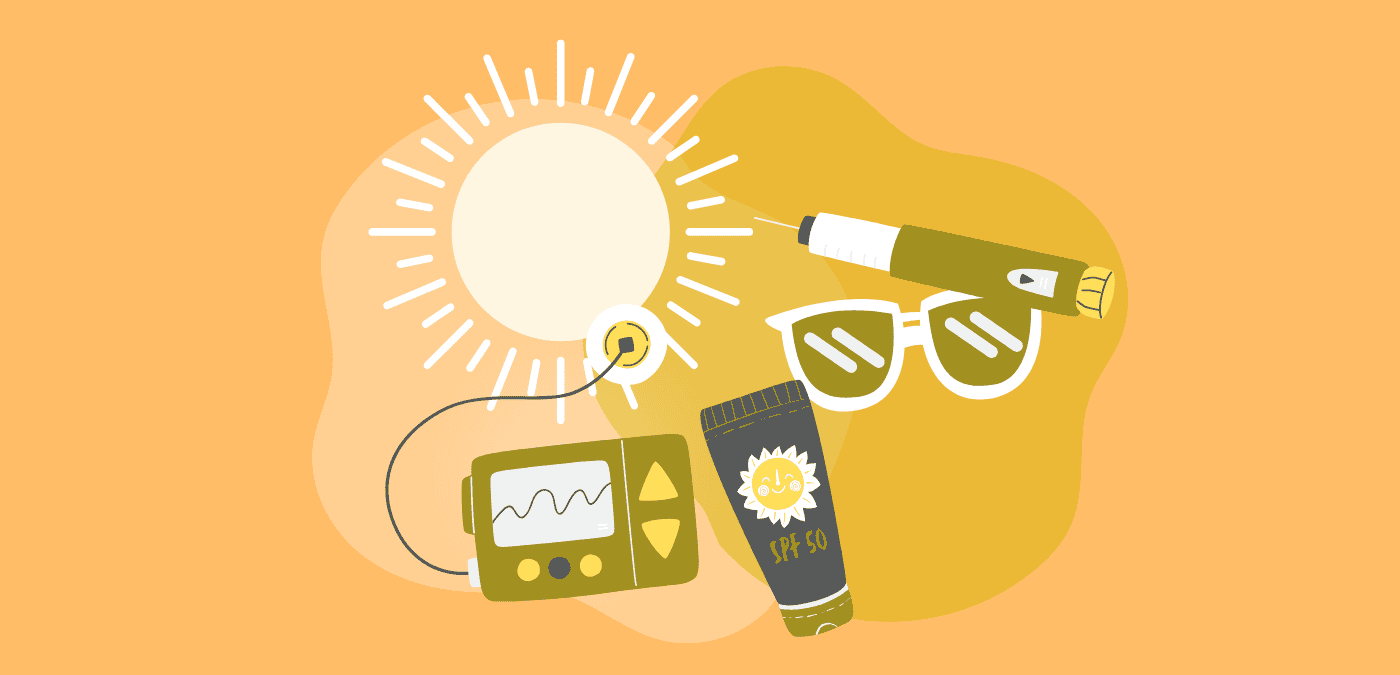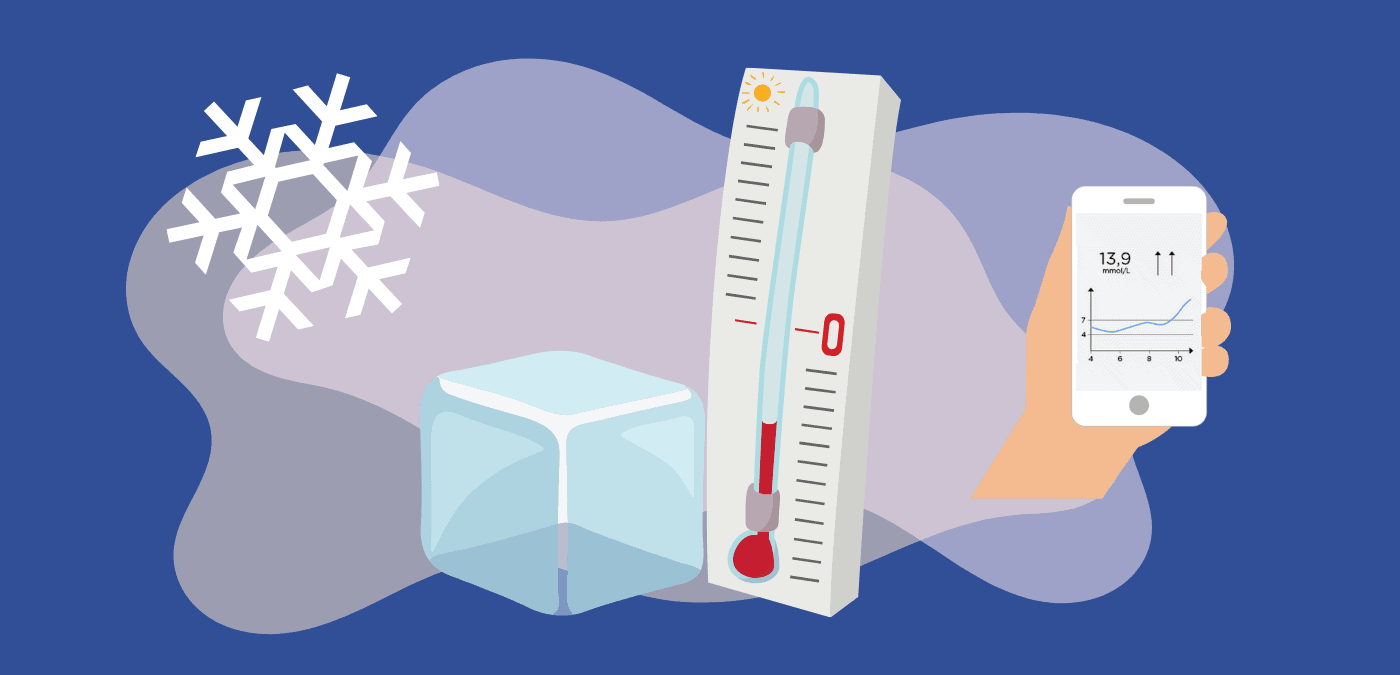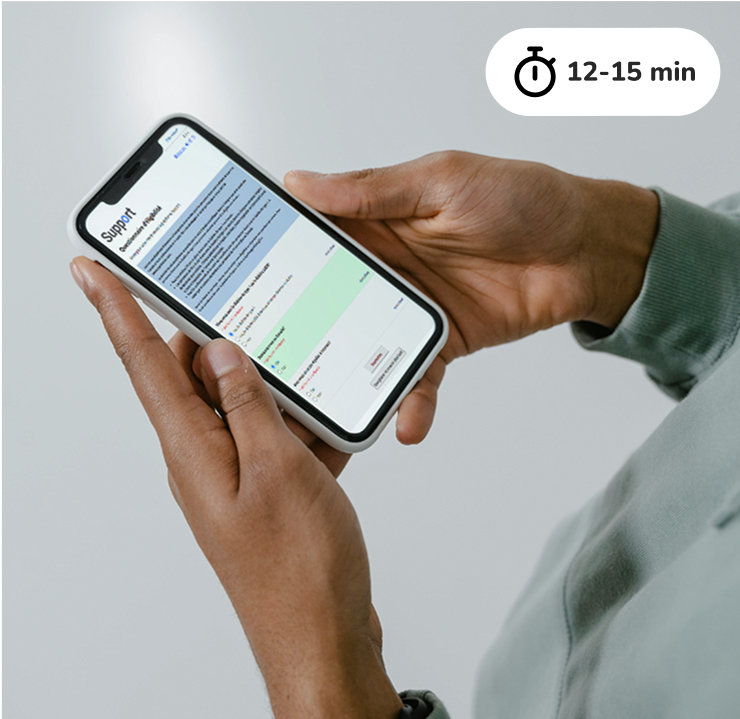First published: July 30, 2021 Updated: May 2025
Summer is finally here! And with it also comes fun in the sun, but not without certain important precautions for people living with type 1 diabetes (T1D).
The heat can affect your blood sugar and your management tools’ performance (e.g., blood sugar meter, sensor, insulin pump). Swimming and other outdoor activities might require a little more planning, especially if you wear a continuous glucose monitor (CGM) or an insulin pump.
No worries! Here are six tips to help you to fully enjoy your summer, safely.
- Keep it cool (your insulin and supplies, that is)
On hot days or summer getaways, make sure to protect your insulin and supplies from the heat to avoid damaging your devices or your insulin losing efficiency.
While on the road, your insulin, blood sugar meter and nasal glucagon can be kept in a portable refrigerator (electrical or filled with ice packs—but be careful not to freeze the insulin!). For children in day camps, you can ask the staff to keep insulin pens and vials in the refrigerator, and all other supplies away from the sun (indoors, ideally).
If any of these options are not available, or if your child wears an insulin pump, you can look for a case or pouch designed to keep insulin and supplies cool, even in extreme heat.
- Some cases are made of absorbing material that lets out thermal energy (depending on the temperature) and self-cools (no need to freeze or soak in water). For instance, BreezyPacks can keep insulin cool at all times in temperatures under 30 °C.
- Pouches made of crystals that transform into cool gel when soaked in water (e.g., FRIO, Glucology) will keep cool for 36 to 45 hours. To reactivate the crystals, you simply soak again for 5 to 10 minutes.
- Thermos-style coolers such as those available at 4Allfamily will keep insulin pens and vials cool for 30 to 72 hours, depending on the model. They can be charged using a USB cable.
- Insulated travel cases (soft or hard) carrying ice packs will usually keep cool for 4 to 6 hours; many options are available online.
2. Check your blood sugar more often
The heat, sunburn and increased physical activity can cause blood sugar to fluctuate. In hot temperatures, the body absorbs insulin more quickly, increasing the risk of hypoglycemia. Check your blood sugar closely and adjust accordingly!
3. Stay hydrated
Lack of hydration, especially on hot days, can raise your blood sugar, which will make you urinate more and lose more fluids. To break this vicious circle, make sure to drink water regularly.
4. Apply sunscreen
Sunburn causes additional stress to the body, which can raise blood sugar. Opt for sunscreen with an SPF of at least 30 and reapply once every two hours (or after swimming or sweating).
5. Pack some extra snacks
Increased activities and heat-related blood sugar fluctuations also mean a higher risk of hypoglycemia. Always have snacks, quick-acting sugar or nasal glucagon on hand.
6. Get moving…when the time is right
The best time for physical activities is in the morning or at the end of the day, when the temperature is cooler. Being active in high temperatures can destabilize blood sugar and be very physically demanding.
What’s more, sweating can make it harder to detect signs of hypoglycemia. Be careful and check your blood sugar regularly.
If you wear an insulin pump: excess humidity can damage your device. Take all necessary precautions to protect your devices and supplies.
These simple, practical tips will help you have a happy, safe and fit summer. You can fully enjoy the nice weather while taking care of your diabetes.
To find out more
Log on now to find answers to your questions, to discover practical tips and to learn about strategies aimed at helping you manage your diabetes day-to-day.
👉 Login
Written by : Sarah Haag, clinical nurse, B.Sc.
Reviewed : Amélie Roy-Fleming RD, CDE, M.Sc.




